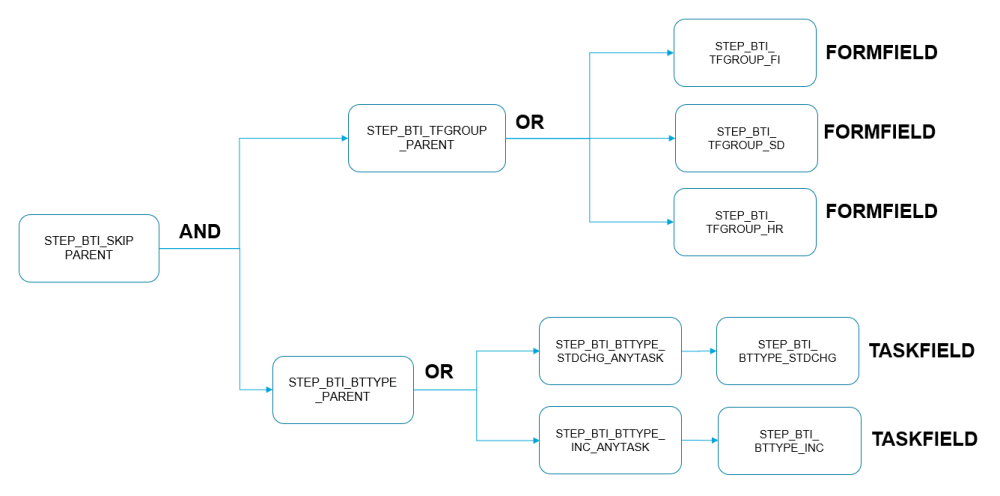This section details the core Rules Engine configuration tables.
| Table | Description |
|---|---|
| /BTI/TE_RE_CONSE | Table where Rules Engine Consumers are switched on. Otherwise, the legacy Skipping and/or Approvals functionalities are used. |
| /BTI/TE_RE_STEP | Table where all parent and child Steps are defined. |
| /BTI/TE_RE_RULES | Table where the overarching parent step Rules are defined (and also briefly documented if desired). |
| /BTI/TE_RE_STEPC | Table where each child Step Conditions are defined. |
| /BTI/TE_RE_SYSTP | Table where Systems are associated as Development, QA, Production systems. This is required if you want to create System-level rules as part of the Skipping and/or Approver consumer configuration tables. |
Tips for Rules Engine Configuration
1. Map out your intended rules diagrammatically before starting any configuration. This will not only aid your thought process in determining what child / parent steps you need to make up your overall Rule, it will also help Basis Technologies assist you more easily in the event you need to raise a support ticket.

Figure: Example of planning out an intended Rule diagrammatically
2. Give all your steps meaningful names, and use a consistent naming convention. This will make it a lot easier to audit and maintain your Rules Engine configuration later.
3. When configuring, create the Steps from left to right. This is required because you cannot define a child step to a parent step unless the parent step has already been configured.
4. If you make any changes to the Rules Engine configuration tables, you must log out of the Windows GUI and back in before they become active. This is not a new phenomenon, it was also the case in previous Skipping and Approvals configuration.



Post your comment on this topic.